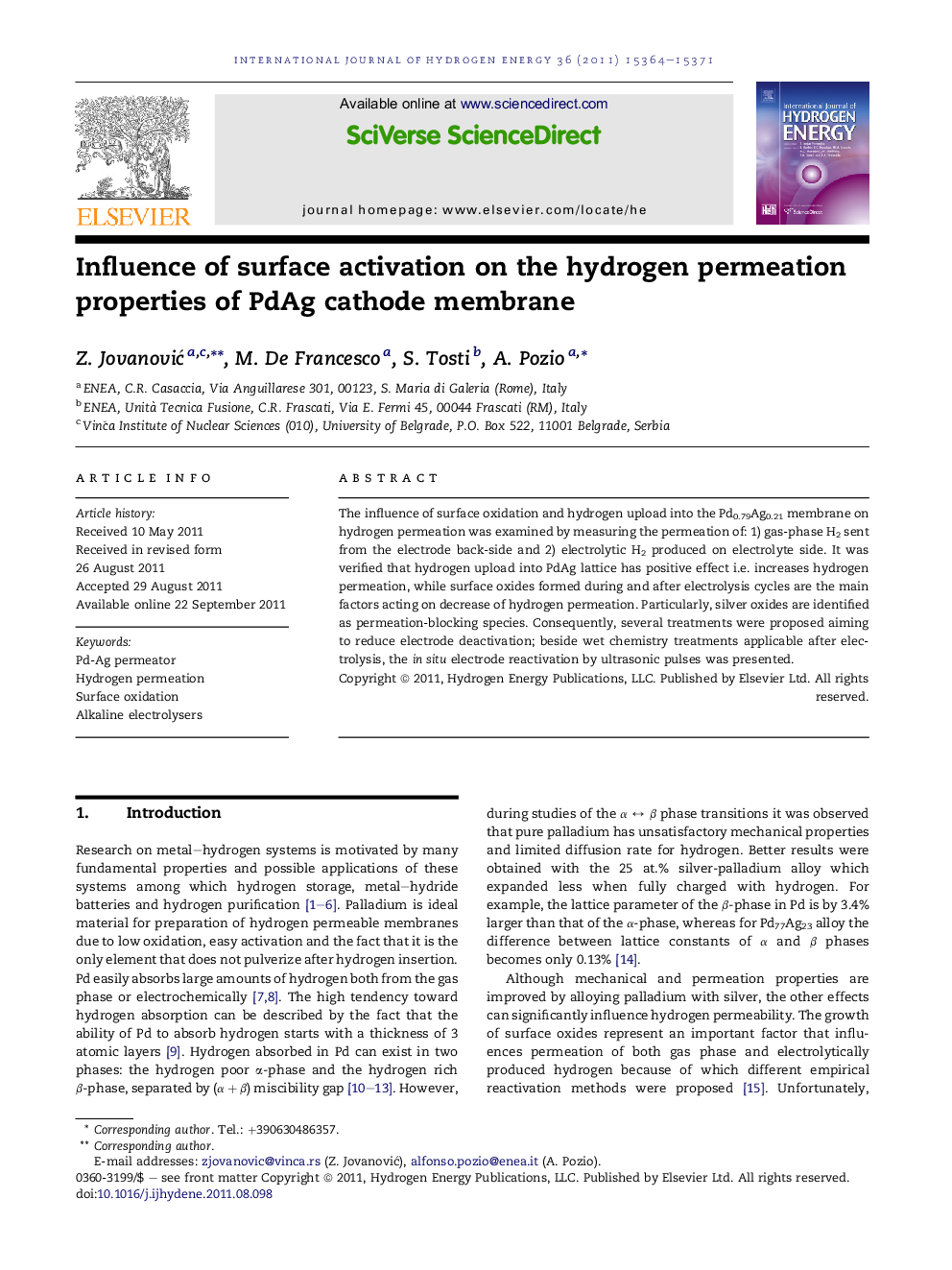| Article ID | Journal | Published Year | Pages | File Type |
|---|---|---|---|---|
| 1271830 | International Journal of Hydrogen Energy | 2011 | 8 Pages |
The influence of surface oxidation and hydrogen upload into the Pd0.79Ag0.21 membrane on hydrogen permeation was examined by measuring the permeation of: 1) gas-phase H2 sent from the electrode back-side and 2) electrolytic H2 produced on electrolyte side. It was verified that hydrogen upload into PdAg lattice has positive effect i.e. increases hydrogen permeation, while surface oxides formed during and after electrolysis cycles are the main factors acting on decrease of hydrogen permeation. Particularly, silver oxides are identified as permeation-blocking species. Consequently, several treatments were proposed aiming to reduce electrode deactivation; beside wet chemistry treatments applicable after electrolysis, the in situ electrode reactivation by ultrasonic pulses was presented.
► We analysed the main factors acting on decrease of H2 permeation. during prolonged electrolysis. ► We examined methods of Pd-Ag electrode reactivation. ► We verified that H2 upload within PdAg lattice has positive effect on permeation. ► Silver oxides represent H2 permeation barrier that can be limited by reductive wet-chemistry. ► In situ electrode re-activation can be achieved by the means of the ultrasonic pulses.
